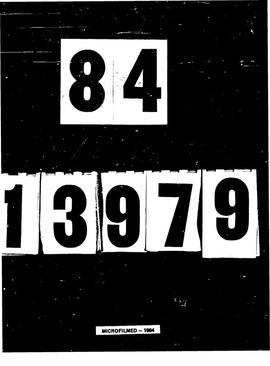| dc.contributor.author | Kshedan, Hadi Salem, | en_US |
| dc.date.accessioned | 2013-08-16T12:29:02Z | |
| dc.date.available | 2013-08-16T12:29:02Z | |
| dc.date.issued | 1984 | en_US |
| dc.identifier.uri | https://hdl.handle.net/11244/5211 | |
| dc.description.abstract | In focusing upon the growth and spatial structure of Tripoli, the following questions are asked: (1) What patterns of residential structure prevail in modern Tripoli? (2) What is the impact of government and public policy upon the spatial structure of Tripoli? (3) To what extent is the spatial configuration of contemporary residential areas in Tripoli a physical expression of the existing socio-economic divisions in the urban society? (4) Can the present land-use patterns of the city be explained by combinations that have been suggested for the spatial structure of the pre-industrial, industrial, and socialist industrial city land-use? | en_US |
| dc.description.abstract | The eighth chapter covers the author's argument that adequate land-use models of Western industrial cities cannot be applied to the contemporary land-use patterns found in Tripoli. It also points out that it is almost impossible to understand Tripoli's land-use patterns without reference to particular historical developments of the city and the consequent impact of these past developments on the present structure of the city. The author concluded that Tripoli, in 1982, had a complex spatial structure which probably reflected the city in a stage of transformation resulting from the imposition of a new structure on an old one. The recent socio-economic socialist policy adopted by the current Libyan government eliminates residential segregation by providing members of the low income population with publicly-built apartments as well as by the government confiscation of private urban property from owners who owned more than the government considered adequate for their needs and its subsequent reallocation to other individual users. . . . (Author's abstract exceeds stipulated maximum length. Discontinued here with permission of author.) UMI | en_US |
| dc.description.abstract | The first five chapters of this study review the historical urban development of Tripoli. In the sixth chapter an attempt is made to investigate the factorial ecology of Tripoli. The seventh chapter attempts to create a generalized geographical model which explains the urban land-use structure of contemporary Tripoli. It has been determined that Tripoli passed through several stages of urban transformation from pre-industrial, to industrial and, finally, to a socialist city stage. | en_US |
| dc.description.abstract | To answer these and related questions, in 1982 the author conducted a nine-month field trip survey of the residential structure of Tripoli's mahallas. | en_US |
| dc.description.abstract | This study is concerned with the growth and the spatial structure of Tripoli as it undergoes the transition from pre-industrial to industrial and, finally, to socialist city. | en_US |
| dc.format.extent | xiii, 263 leaves : | en_US |
| dc.subject | Geography. | en_US |
| dc.title | The spatial structure of Tripoli, Libya : | en_US |
| dc.type | Thesis | en_US |
| dc.thesis.degree | Ph.D. | en_US |
| dc.thesis.degreeDiscipline | Department of Geography and Environmental Sustainability | en_US |
| dc.note | Source: Dissertation Abstracts International, Volume: 45-07, Section: A, page: 2219. | en_US |
| ou.identifier | (UMI)AAI8413979 | en_US |
| ou.group | College of Atmospheric & Geographic Sciences::Department of Geography and Environmental Sustainability | |
